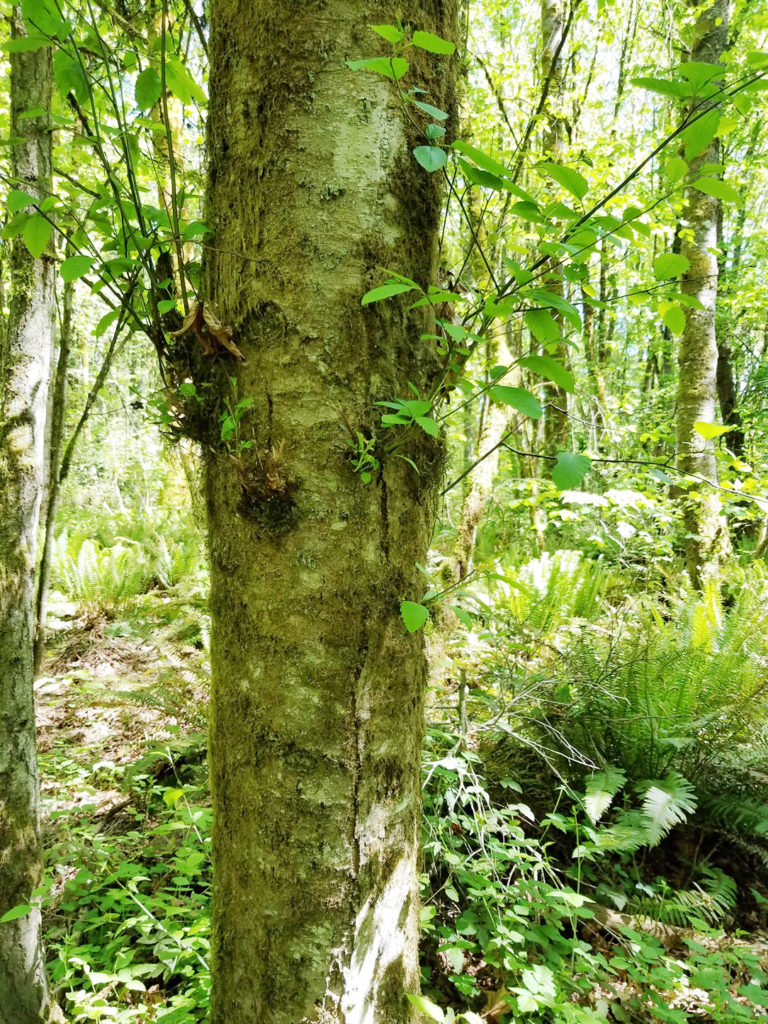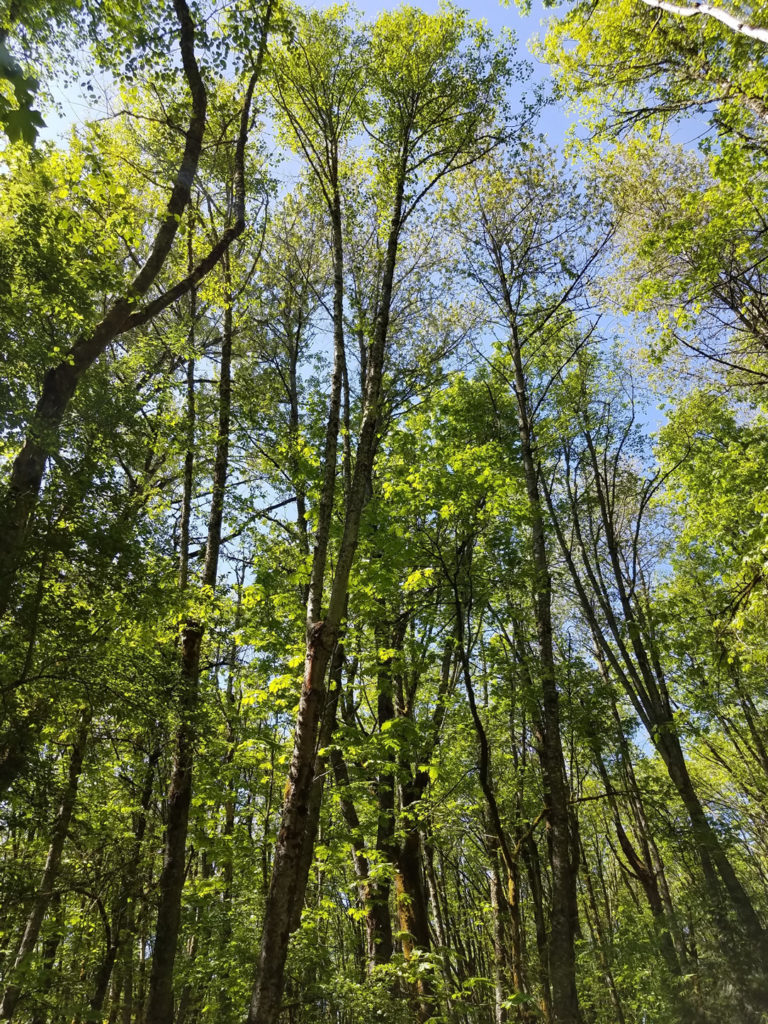 Red Alder, Alnus rubra
Red Alder, Alnus rubra
Betulaceae – Birch family
The scientific name is simply the Latin term for “alder” and “red.” The red coloration is not readily apparent until the inner bark and sapwood are exposed. The buds also become reddish in late winter. The common name “alder” is derived from Old English “alor,” in turn derived from the Latin term “alnus.”
Red alder readily colonizes disturbed ground. The exceptionally light seeds (about 700 thousand per pound) are carried miles by wind. Red alder and big leaf maple grow very quickly, and are frequently the dominant trees in the first 30 to 80 years of a young forest before the conifers over-top aging deciduous trees. A mutually beneficial (symbiotic) relationship between nitrogen-fixing bacteria and the roots of red alder enriches the soil. Red alder has 70 to 100 foot upright trunks with smooth gray bark aesthetically splotched with various shades of lichen. The leaves are ovate and saw-toothed (doubly serrate). The male flowers or catkins disperse pollen in the spring, and by fall the female flowers have developed into woody pine cone-like structures that release countless tiny seeds to the wind.
Red alder is becoming increasingly popular furniture wood, providing some relief for dwindling resources of tropical hardwoods. The woodworking virtue of red alder was widely known by Northwest peoples. Dishes, spoons, platters, canoe paddles, and cradles are some items crafted from alder wood. It is a good source of firewood and is preferred for smoking salmon. The inner bark yields a reddish-brown dye that made nets invisible to fish. Erna Gunther reports that at least one Native group drank tea from boiled red alder bark for relief of colds, stomach troubles, and sores. A relative of red alder, paper birch (Betula papyrifera) is sometimes found scattered in the woods. These birch trees are probably the result of naturalized seedlings from the suburban landscape since paper birch is normally native east of the Oregon Cascades (5-5).

Information courtesy of “The View From Springbrook Park; an Illustrated Natural History” by Ed Chinn.
Photos by Laura Tanz
Sponsored by Friends of Springbrook Park; Lake Oswego, OR